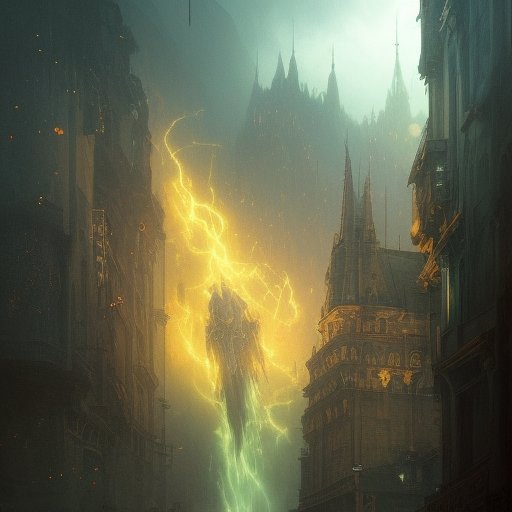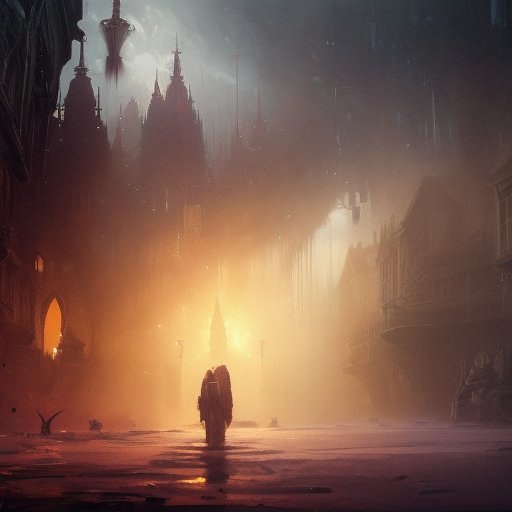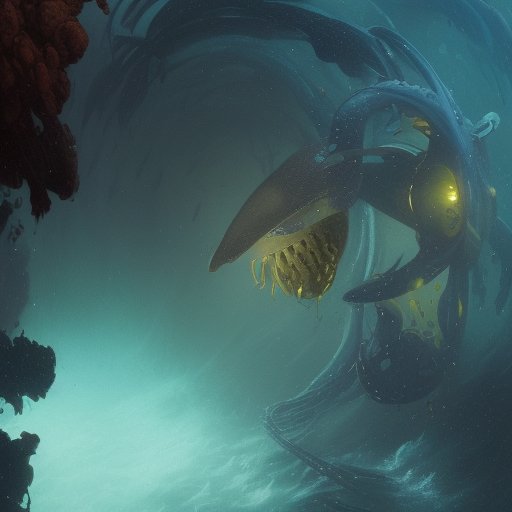
Nuclear fallout brought the end of humanity, but some survived. They found refuge in the underground cave system, and the weather has become a mystery to them. Rain, snow, and wind are only some of the elements that affect the ecosystem that surrounds them. Without the tools they once had, the survivors have developed a new way to understand and forecast the weather. Haiku brings us descriptions of the world that has been created from the ashes of the old one. This post-apocalyptic weather report serves to inform and guide those who inhabit this new world that was created after a catastrophic event.
I. Introduction
Greetings, fellow travelers of the new age! The world as we once knew it is gone, leaving a grim reality in its place. An era in which weather conditions made everyday living bearable has been replaced by a world that operates on entirely different rules. The post-apocalyptic society now emerges from the ashes of the past, as humanity attempts to rebuild its existence in ways that would have been unthinkable only a few decades ago.

In this harsh new world, the weather underground has become of paramount importance, providing a natural suite of services and serving as a symbol of hope and optimism. A vast underground cave system is now home to the remnants of humanity, a place where a glimpse of what the world once was can be relished. The cavern walls, glowing with the orange color of sulfur and speckled with shards of crystal, provide a stark backdrop to what would have been unimaginable beauty. Yet, even here, the weather continues to be a challenge, forcing humans to adapt in ways that would have been once considered impossible.
In the years following the great catastrophe, the air quality plummeted and the temperature soared, leading to the development of more dangerous weather patterns. Communication systems were destroyed leaving humans to rely on their instincts for survival. The sky was now an endless sea of soot and dust, blotted out by the sun, except during fleeting moments of clear, blue skies.
It is in this story of survival that we find ourselves. The post-apocalyptic world, has created a new meaning of existence. Through the power of science and resilience, humanity has continued to make advances in spite of the devastation of the past. Join us as we explore the underground caves that now form a crucial part of the new world’s infrastructure, and as we take a closer look at what the weather in this new society looks like.
II. The Underground Cave System
Few could have predicted that an underground cave system would become the refuge of humanity. The caves have become central to the survival of our species, but they also remain a mystery, a world waiting to be discovered.
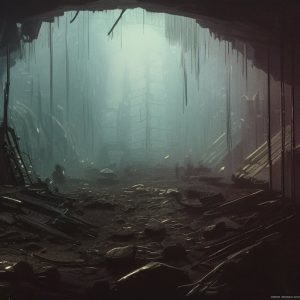
The caves are vast and extend for miles. They are connected by tunnels, and some are so large that they resemble grand halls in old castles. The floors, dotted with stalagmites and stalactites, contrast with the smooth walls that curve to meet the ceiling high above.
But what is most fascinating is the glow. The walls of the caves emit an eerie light, a natural phenomenon that occurs because of the abundance of sulfur crystals in the vicinity. The light provides enough illumination to navigate through the tunnels, and some plants have adapted to grow without access to sunlight.
There are rumors that the caves may be even more extensive than previously thought, and that there may be pockets of untouched caverns that have yet to be discovered. Some even claim that there may be underground lakes, ecosystems that could be self-sustaining.
Despite mankind’s presence, the caves remain wild and unpredictable. Some areas are prone to sudden rockfall, and others are affected by flooding during heavy rains. Those who explore the caves must always be vigilant.
The underground caves hold many secrets, but they are vital to the survival of our species. And as more and more of the new world becomes hostile to human life, the caves may prove to be the last refuge of humanity, the key to our continued existence in this harsh new world.
III. The Fallout Factor
Nuclear radiation has caused profound changes in the planet’s atmosphere. The colorful skies we once beheld have now become dull and lifeless as the fallouts blocked the sun’s rays from reaching us. The chemicals in the air have now become a deadly poison, contaminating the water and killing anything that comes into contact. Radioactive particles have drifted high and wide over the years, leaving an irreparable mark on the environment.
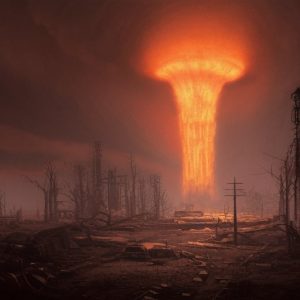
The fallout’s effects are concrete and observable. Soot and smog have replaced the daylight hours, and in some regions, it is virtually impossible to differentiate between day and night. The temperatures have skyrocketed, leading to a host of health concerns, and the once-lush forests have been scorched beyond repair. A host of new researchers and practitioners focused on radiation sickness have emerged, but the wind carries the particles everywhere, making it impossible to avoid exposure.
The people are gradually succumbing to the effects of radiation sickness. The people’s skin has become thin and blemished, and the vision has become blurry. The human biology has been tampered with from the nuclear fallouts, and countless future side effects are bound to happen. Survivors of the explosion are genetically altered and visibly identifiable from their descendants. The nuclear power plants that once powered large cities have become ground zero for new bioluminescence plants.
Mankind’s hubris brought forth this tragedy. Once upon a time, we tampered with things we had no control over in the form of the atom. But, as we lie battered and bruised, there are still glimmers of hope that the next generation will not make the same mistake again. The people sure won’t forget the adverse impact that radioactivity had on the environment, and pray for a better tomorrow.
IV. Weather Haiku
As we venture into the new climate landscape, we find a world that would be unrecognizable to our forefathers. In this world, the weather is our constant companion, and it shapes our existence more than any other factor. It is the snow that falls so deep that it buries the trees, the searing heat that pierces the skin, and the howling winds that can last for days.
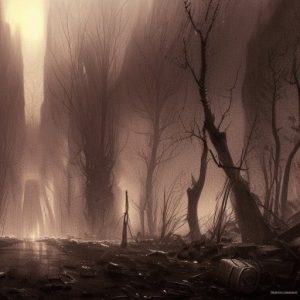
The weather of this place is a thing of beauty, and it is also a thing of terror. It ebbs and flows with an unpredictable pattern that makes it difficult to navigate. But amidst all this, there is an undertone of poetry that speaks to us through the majesty of nature.
The climate landscape has transformed, and with it so has the weather. But even in this new world, there is beauty, and there are moments of peace. The haikus remind us of the transient nature of these experiences and how they must be cherished in fleeting moments. It is now the time to embrace this new world with all of its challenges and beauty.
V. The Weatherman
Without the help of satellites, forecasting the weather in the post-apocalyptic world was once thought to be impossible. But in this new reality, the weatherman has evolved alongside the changing climate. Through scientific research and experimentation, new methods of predicting the weather have been developed that work with the unique features of this new world.

By using the laws of nature, and observations of environment, a team of meteorologists study the patterns of ecological cycles that exist within the network of caverns. This knowledge has allowed them to develop new techniques for predicting weather patterns, such as hand-held devices that analyze air currents and the moisture levels in the atmosphere.
These weather scientists also utilize the skills and knowledge of ancient cultures that lived and studied the caves before the nuclear fallout occurred. These people had an ability to track the movement of the clouds and the wind, forecasting weather changes with astonishing accuracy. The historic records and ancient insights acquired have been combined with advanced technologies, allowing for more precise predictions and more accurate forecasting techniques.
At times, predictions do fall short, as different regions of the cave system can have wildly different weather events occurring simultaneously. When this happens, the pressure falls on the humans themselves, who must learn to take on the responsibility of observing their surroundings and becoming in tune with their environment. Through observation, they can take action to safeguard their communities and sustain their lives.
In this new era without satellites and sophisticated technology, the weatherman relies on the raw elements of nature and the knowledge provided by the survivors of humanity. Together, they work towards a better understanding of the weather cycles in the underground cave system and push the boundaries of our current scientific understanding.
VI. Conclusion
And thus, we come to the end of our journey. The weather in the underground is now one of the many harbingers of change that make up the new world. While the future may remain uncertain, we must continue to adapt to the forces around us.
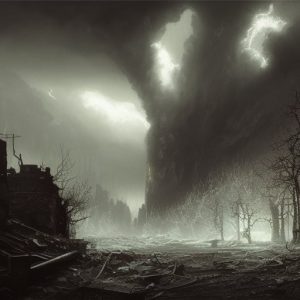
Amidst the horror and devastation of the past, we have managed to survive and thrive, re-inventing ourselves in ways that were once beyond our imagination. Our journey underground has been one of transformation and renewal, Even despite the challenges we continue to face, there is reason to believe that the worst is behind us.
Through research and perseverance, we have been able to make sense of the chaotic weather conditions that now rule our lives. While it is tempting to long for the ways of the past, we must learn from our mistakes and continue to look ahead to a better future.
As we emerge from the underground cavern system, we take with us the hard-won lessons of resilience and hope that have sustained us through the darkest of days. The future may be fraught with uncertainty, but we can take comfort in the fact that we have the power to shape our destinies.
So let us face the future head-on, ready to confront whatever challenges may lie ahead. After all, we have already overcome so much. With determination and courage, we can create a new future, one that is brighter and more resilient than ever before.


